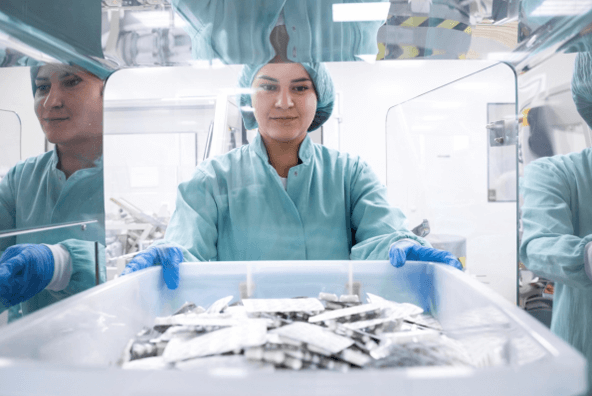Table of Contents
A biopharmaceutical is any pharmaceutical product manufactured, semi-synthesized, or extracted from living organisms. Pharmaceutical manufacturing has focused on developing drug products that improve patients’ health and quality of life. There have been advances in treatment for illness and disease, which plays a central role in healthcare today.
Biopharmaceutical careers
Working in this field involves studying medicine and its distribution to consumers. It includes the research, production, and distribution of devices, drugs, services, and treatments. It also entails collecting and analyzing data to develop valid treatment plans. There are numerous roles in this sector, including biochemist, microbiologist, research scientist, and drug manufacturer.
COVID-19 has resulted in the growth of the biopharma industry. It is one of the few sectors that has grown because of the pandemic. As a result, numerous job opportunities have become available. Experienced employees are required to work on sensitive projects in this field. The number of roles that combine science with technology has increased.
Pursue a rewarding career in pharmacy with the doctor of pharmacy online at the University of Findlay. This four-year program includes didactic coursework, on-campus immersions, and experiential learning. The course starts in the fall of 2023 at a reputable and accredited university.
Biopharmaceutical principles
Biopharmaceutics studies the relationship between the drug’s chemical properties, dosage, and the extent and rate of drug absorption. These all occur before determining the drug’s curative effect.
The patient takes the medication by a route of administration, such as oral or intravenous. A fraction of the drug is absorbed at the administration site either into the body (as with oral dosage) or the adjacent tissue. Eventually, the drug arrives at the site of action. The dosage schedule is developed at clinical trials to ensure it gives the most benefit to the majority of patients. This process is influenced by the dosing unit and the chemical properties of the drug. The medicative result comes from minimum effective concentration being reached or exceeded.
In the past, drugs have been evaluated by pharmaceutical scientists who use different routes to give them to humans or animals and then compare results. Testing on a drug called isoproterenol revealed a side effect of increased heart rate when taken intravenously but no side effect when taken orally. Bioavailability differences may become evident by observing the various effects of the drug products. The drug properties, delivery route, and dosage form can influence whether a drug is effective, toxic, or has no effect.
In America, the US Food and Drug Administration (FDA) approves all drugs to be distributed. Pharmaceutical manufacturers carry out research and development before approval. When manufacturers have a new drug, they must submit a New Drug Application to the FDA, but an Abbreviated New Drug Application must be submitted for an existing drug. They must show that drugs perform effectively before they can be sold to consumers.
Biopharmaceutics supplies the science underpinning drug product development and drug product design. The manufacturing procedure of the drug unit can affect the release of the drug and the drug availability at the site of action.
Biopharmaceuticals and healthcare
New medicine brings value to patients, the healthcare system, and society. Diseases are targeted, personalized therapies are developed, and treatments are improved. Prescription medicines have contributed to advances in healthcare, with patients living longer and having healthier lives. In the last twenty-five years, the experience of having many serious conditions and diseases has changed, including hepatitis C, HIV and AIDS, heart disease, and cancer. This has led to reduced death rates, better health outcomes, and improved quality of life for patients.
New drugs are targeting the hidden causes of serious diseases, which have become manageable and even curable. This new era of medicine and science is contributing to advances in care for rare and chronic conditions. The treatment for these conditions has become more tolerable, effective, and convenient, and improved life expectancy and quality of life for patients. Continued progress in biopharmaceutical innovation will be essential in improving public health, meeting unmet needs, and addressing healthcare challenges.
Examples of the treatment for chronic conditions include multiple sclerosis (MS), which has advanced with oral medicines that are easy to take and the first-ever treatment for progressive MS, offering patients more opportunities to manage the condition better and slow disease progression. With hepatitis, advances can cure the disease and help patients avoid serious complications such as liver cancer, liver disease, cirrhosis, and death.
The advance of treatments will be critical in addressing future health and economic challenges. The development of medicine has never been so active, and recently, there has been targeting of research, treatment, and vaccines for COVID-19. Developing new drugs is a long and arduous process with setbacks occurring along the way.
Prescription medicines are a small part of national spending in America, and the government predicts it will remain a small part over the next ten years. Brand manufacturers offer discounts, rebates, and fees to private payers, supply chain entities, and the government. Brand medicine net price growth has been below or in line with inflation for the last five years.
The undertreatment of chronic conditions and the underuse of prescription medication are significant problems. Medicine helps people have healthier lives and decreases the need for costly healthcare services such as hospital stays, emergency treatment, surgery, and long-term care. Research has shown that improving medicine can give better health, increase worker productivity, and reduce costs for other healthcare services. At the moment, biopharmaceutical researchers are driving therapeutic advances. There is research into many diseases and conditions, such as Alzheimer’s, cancer, and hemophilia.
Conclusion
Biopharmaceuticals research and develop drugs to treat illness and disease. This has resulted in advances in treatments, including those for chronic conditions. People’s health has improved, as has their quality of life. With effective medical treatment available, there is less pressure on the healthcare system, and costs for medical care are reduced. This industry is involved in the COVID-19 situation and aims to reduce the risks of this disease and continue to develop innovative medical treatments.




![1000 Girl Attitude Names for Truecaller ID | UPDATED [Included Boys Names] 1000 Attitude Names for Girls on Truecaller](https://edutechbuddy.com/wp-content/uploads/2025/05/ChatGPT-Image-May-21-2025-11_59_39-PM-1-150x150.png)







